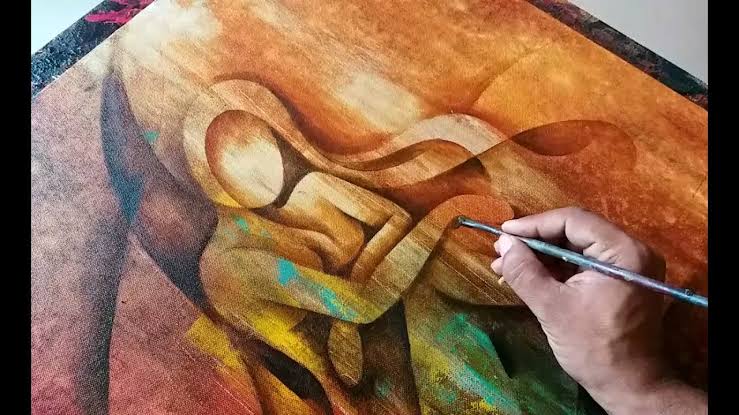
If you were asked to choose between an artwork that displayed amazingly realistic rendering or one that is able to express ideas in a very unique way, which would you choose? Are you one of those people that just plain hate all degrees of abstraction in art, praising only those artists who consistently produce work with high levels of realism? On the other hand, do you find photorealism boring and lacking a particular style or unique touch on part of the artist?
In this blog post, I will explain the differences and similarities between figurative and abstract art styles, as well as why it is important to make space for both in our artistic journeys. Also, I will be sharing some effective tips and exercises that will help you move towards creating artwork that shows both technical skills AND is also highly expressive.
This is not going to be an opinion-driven post bashing either abstract or figurative artwork or anything in between. This will not be a rant about how much I dislike either style and, much less, a criticism towards artists of any kind. Au contraire, my friend! One of my main philosophies in life is appreciating and learning from all types of things and finding morsels that speak to me so I can create my own unique mishmash of awesome.
I believe that there is something to learn from everything and that if one remains open, there will ALWAYS be something valuable to take that will enrich us as human beings (and consequently improve our work). I believe exploration and the desire to improve should be an intrinsic part of an artist’s life and feel like constricting oneself to a particular style will not allow as much progress to be made.
This said, today I am not going to get into the contemporary kind of artwork that does not really demonstrate any kind of particular knowledge about Art Fundamentals on part of the artist. You know what kind of works I am talking about! Though I do give some of these artists merit for striving to engage with their audience at a philosophical level and attempting to communicate ideas about difficult topics, in this blog post I am only considering work that shows knowledge of Elements and Principles of Art/Design.
In my personal case, it didn’t take long to realize that I am naturally drawn towards creating figurative artwork. What HAS been a struggle, however, has been reaching a conclusion about what degree of realism I want my artwork to convey. You see, though I admire and respect hyper/photorealist artists very much, I would like to be able to arrive at some distinctive style that I can call my own someday.
Though it requires an immense amount of patience and skill to produce hyperrealism, I want my work to be more than an exact replica of what everyone else is able to see by looking at a picture. I’d like to arrive at an artistic style that demonstrates both skills AND is able to communicate an idea or feeling. I know I have a long way to go before arriving at this point, but simply having reached this conclusion tells me I am making progress as an artist.
What do the terms Abstract and Figurative mean in Art?
Figurative and Abstract are simply two (very broad) categories in which artwork, be it painting or sculpture, can be divided into. It is important to understand that there are numerous degrees of figuration and abstraction, and this can even occur within one same piece. Though some art can be easy to categorize into either pool, others are a bit harder to decipher. There are a few art terms that are often confusing when learning about figurative and abstract art that I want to touch upon.
The word representational is often used interchangeably with figurative but these two terms are not synonyms. Both abstract AND figurative artworks are usually representational. Why? Because, most of the time, even when creating work that is completely abstract, there is something from the real world that artists are trying to represent.